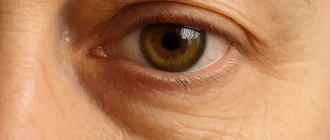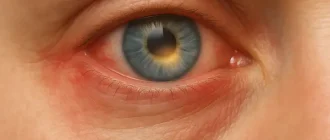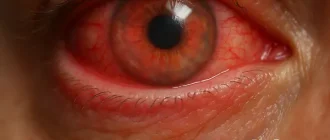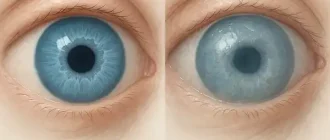If your eyes feel unusually painful after removing your contact lenses, you might dismiss it as irritation or dryness. But could it be something more serious? Acanthamoeba keratitis is a rare yet severe eye infection that you should know about.
Contact Lens Hygiene Compliance Among Patients
| Hygiene Practice | Compliance Rate (%) |
|---|---|
| Using Sterile Solution | 70% |
| Avoiding Water Exposure | 50% |
| Replacing Contact Cases Regularly | 30% |
| Following Wear Time Recommendations | 40% |
This chart illustrates the compliance rates of patients with various contact lens hygiene practices, highlighting areas where improvements are needed.
What is Acanthamoeba Keratitis?
Acanthamoeba keratitis is an infection caused by a microscopic organism called Acanthamoeba. This organism is commonly found in water, soil, and even the air. While it’s harmless for most people, contact lens wearers are particularly vulnerable.
This infection attacks the cornea—the clear, dome-shaped surface of your eye—and can lead to severe pain, blurred vision, and even permanent vision loss if untreated.
Why Contact Lens Wearers Are at Risk
The majority of Acanthamoeba keratitis cases occur in contact lens users. Why? Poor lens hygiene, exposure to contaminated water, or wearing lenses longer than recommended can introduce the organism to your eyes.
Here are some common risk factors:
- Rinsing lenses with tap water instead of saline solution.
- Swimming, showering, or using hot tubs while wearing contacts.
- Using expired or improperly stored lens solutions.
Symptoms of Acanthamoeba Keratitis
Early symptoms might mimic other eye conditions, making diagnosis tricky. Be on the lookout for:
- Persistent eye pain, especially after removing contacts. This isn’t just mild discomfort—it feels like a deep, unrelenting ache that doesn’t go away.
- Sensitivity to light (photophobia). Bright lights may cause sharp pain or a reflexive urge to close your eyes, making daily activities like driving difficult.
- Redness that doesn’t improve. Unlike typical irritation, this redness is persistent and can cover the entire white part of your eye.
- Blurred or cloudy vision. Your vision might seem as if you’re looking through a fogged-up window, affecting your ability to read or recognize faces.
- A feeling of something stuck in your eye. This sensation doesn’t improve with blinking or rinsing your eyes and may feel like a sharp or gritty foreign object is present.
If you experience any of these symptoms, consult an eye specialist immediately. Early treatment can prevent long-term complications.
Symptoms of Acanthamoeba Keratitis by Frequency
This chart showcases the frequency of common symptoms experienced by Acanthamoeba keratitis patients, emphasizing the most prevalent signs.
How Is It Diagnosed?
Diagnosing Acanthamoeba keratitis involves several precise and reliable methods. Initially, your doctor will perform a detailed eye examination, focusing on identifying corneal irregularities or lesions commonly associated with the infection. A key diagnostic step is corneal scraping, where a small sample from the affected area is collected for laboratory analysis. This helps confirm the presence of Acanthamoeba and rule out other possible infections.
Advanced diagnostic tools, such as confocal microscopy, may also be utilized. This imaging technique provides high-resolution, real-time views of the cornea, allowing doctors to detect Acanthamoeba cysts with remarkable accuracy. Polymerase chain reaction (PCR) testing is another advanced method, amplifying the organism’s DNA for definitive identification. Together, these approaches ensure a comprehensive and accurate diagnosis, which is crucial for effective treatment planning.
Treatment Options
Treating Acanthamoeba keratitis requires a combination of medications, including:
- Antiseptic drops to kill the organism.
- Effectiveness: 5/5. These drops directly target and eliminate the Acanthamoeba, making them the cornerstone of treatment.
- Complexity: 3/5. Requires consistent application several times daily for weeks or months.
- Costs: $100–$300 per month, depending on the brand and insurance coverage.
- Advice: Follow the schedule meticulously. Missing doses can reduce effectiveness and prolong treatment.
- Antifungal medications if a secondary infection is present.
- Effectiveness: 4/5. These are critical for addressing additional fungal infections that may complicate recovery.
- Complexity: 4/5. Fungal infections can be stubborn and require prolonged treatment.
- Costs: $200–$500 per course, varying by type and duration.
- Advice: Combine with antiseptic drops for the best outcome; always consult your doctor about side effects.
- Steroids (used cautiously) to reduce inflammation.
- Effectiveness: 3/5. They provide relief from inflammation but do not treat the underlying infection.
- Complexity: 4/5. Overuse or incorrect dosing can worsen the condition.
- Costs: $50–$150 per course.
- Advice: Use only under strict medical supervision; steroids can mask symptoms and complicate healing.
Treatment can take weeks or even months, and severe cases may require corneal transplantation.
Real-Life Outcomes: Treatment Success Rates
| Outcome | Percentage (%) |
|---|---|
| Full Recovery | 60% |
| Partial Vision Loss | 25% |
| Corneal Transplant Required | 10% |
| Severe Vision Loss | 5% |
This chart illustrates the real-life outcomes of Acanthamoeba keratitis treatment, highlighting the success rates and challenges faced by patients.
Real-Life Case: A Warning from Experience
Consider the case of a 28-year-old man from California who developed Acanthamoeba keratitis after wearing contacts in a hot tub. His symptoms began with mild discomfort but escalated to intense pain and vision loss. Despite months of treatment, he required a corneal transplant to restore partial vision.
Prevention: Simple Steps for Safe Contact Lens Use
You can significantly reduce your risk by following these guidelines:
- Always use fresh, sterile saline solution to clean and store your lenses. For example, never reuse old solution or top off what’s already in the case. Using fresh solution every time ensures that harmful microorganisms are eliminated.
- Avoid water exposure while wearing contacts. This includes activities like swimming, showering, or even washing your face with contacts in. A real-life mistake? One patient wore lenses in the shower, leading to Acanthamoeba exposure that required months of treatment.
- Replace your contact case every three months. Think of it as changing your toothbrush; cases can harbor bacteria and other pathogens over time, even if cleaned regularly.
- Follow your eye doctor’s recommendations for wear time and hygiene. If you’re told to replace your lenses every two weeks, don’t push it to a month. Over-worn lenses become breeding grounds for germs and can compromise the cornea.
Editorial Advice
- Reyus Mammadli’s Tip: “Handle your contact lenses with care: always use fresh solution and never leave them unprotected.”
- Be proactive about eye health; small lapses in hygiene can lead to big problems.
- When in doubt, take a break from contact lenses and wear glasses until your eyes feel normal again.





